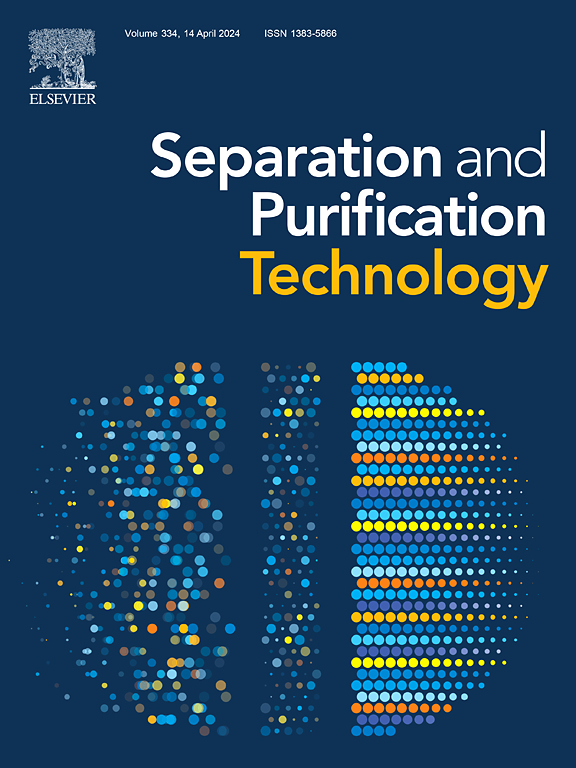Direct fabrication of high-purity magnesium ingot using vacuum distillation technology
IF 8.1
1区 工程技术
Q1 ENGINEERING, CHEMICAL
引用次数: 0
Abstract
The conventional vacuum distillation technique for fabricating high-purity Mg faces challenges involving the difficulty of collecting fine Mg crystals and a reduction in purity due to remelting. In this study, a novel apparatus was designed to purify crude Mg and directly fabricate a high-purity Mg ingot, which overcomes the shortcomings of the conventional technique and shortens the process flow. A numerical simulation was conducted to investigate the formation mechanisms of distillates with different morphologies in different crucibles. It was found that Mg vapor could be changed to liquid in the crucibles in the middle part by adjusting the temperature and pressure; thus, a high-purity Mg ingot could be obtained, whereas only Mg crystals could be obtained by changing from vapor to solid in the crucibles in the rear part. Furthermore, the contents of some impurity elements (Mn, Pb, Al, and Ca) in the high-purity Mg ingot first decreased and then increased with an increase in the load temperature, with 973 K being the optimal load temperature. However, the purification of Zn impurities was limited. Finally, a high-purity Mg ingot with a mass greater than 100 g and purity higher than 99.996 % (4N6) was successfully fabricated, with the yield ratio reaching 65 % using the present apparatus. This study provides a new technique for the direct fabrication of high-purity Mg ingots.


求助全文
约1分钟内获得全文
求助全文
来源期刊

Separation and Purification Technology
工程技术-工程:化工
CiteScore
14.00
自引率
12.80%
发文量
2347
审稿时长
43 days
期刊介绍:
Separation and Purification Technology is a premier journal committed to sharing innovative methods for separation and purification in chemical and environmental engineering, encompassing both homogeneous solutions and heterogeneous mixtures. Our scope includes the separation and/or purification of liquids, vapors, and gases, as well as carbon capture and separation techniques. However, it's important to note that methods solely intended for analytical purposes are not within the scope of the journal. Additionally, disciplines such as soil science, polymer science, and metallurgy fall outside the purview of Separation and Purification Technology. Join us in advancing the field of separation and purification methods for sustainable solutions in chemical and environmental engineering.
 求助内容:
求助内容: 应助结果提醒方式:
应助结果提醒方式:


